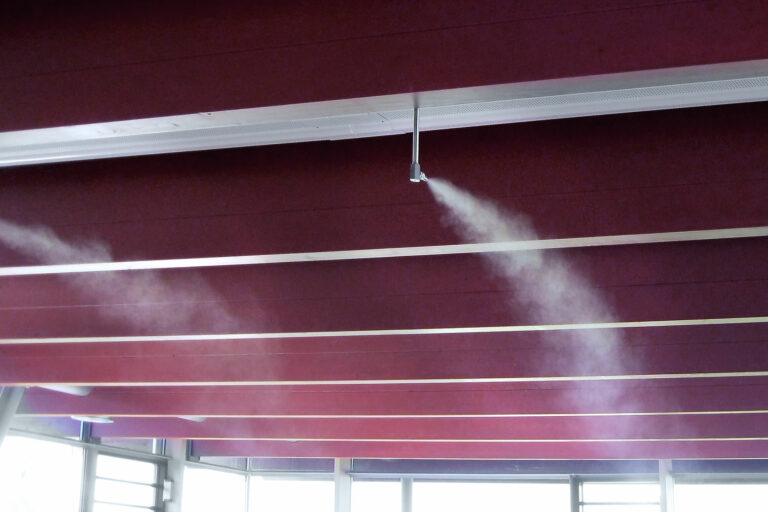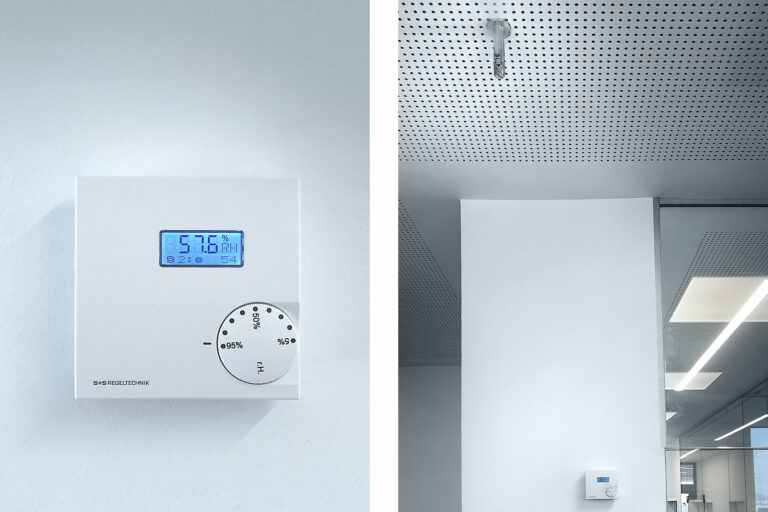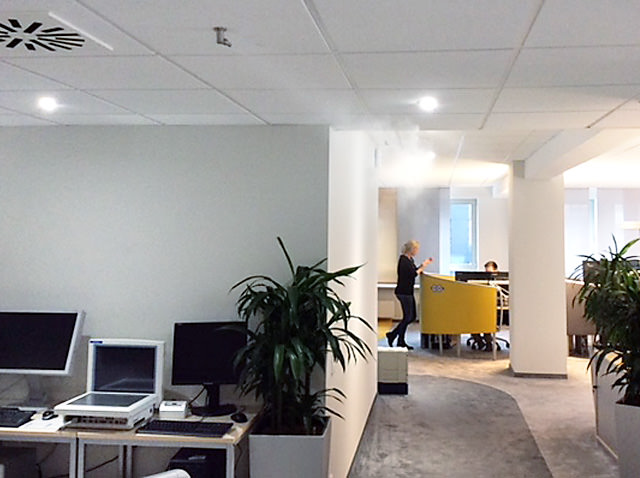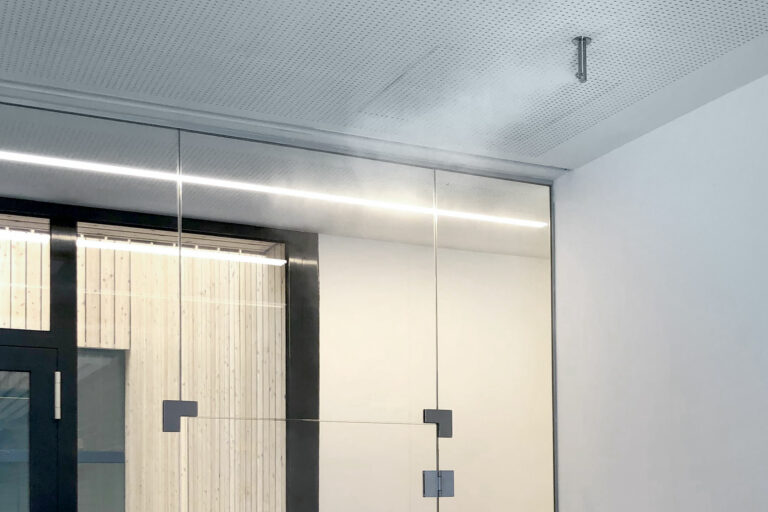Fewer sick days, less fine dust & better concentration thanks to air humidification in offices
The topic of a “healthy workplace climate” is increasingly taking centre stage. With the aim of saving energy, our buildings are being increasingly sealed. If there is any air exchange at all, it occurs through ventilation systems. However, this “forced ventilation” often overlooks one important aspect: healthy humidity levels. In ventilation systems, heating is used, sometimes cooling as well, but very rarely humidification. And even when humidification is used, it is not guaranteed that the technology employed is suitable for creating the ideal climate for people in office spaces.
Creating a pleasant working climate
In summer, the humidity is regulated by nature. The exchange of air also ensures that there is sufficient humidity in the rooms, depending on the weather. This is different in winter, when outside air is transported into the rooms, which generally has a low water content (cold air contains very little water). This air is then heated in the rooms. As a result, the relative humidity often drops below 20 % RH in the cold season. This is a far cry from the ideal value for offices of 40 – 60 % RH at a temperature of 20 to 22°C.
Improving health and performance
Moisture in the office is often an underestimated issue. However, low humidity can have serious effects on our health and performance.
Symptoms of low humidity in the office
- Drying out of the mucous membranes in the nose and throat; the protective barrier against bacteria, viruses and germs is destroyed. Pathogens can penetrate the respiratory tract more easily and colds and even more serious illnesses are possible as a result.
- If the humidity is too low, viruses, germs and bacteria are lighter and more airborne. If the humidity is higher, the pathogens become heavier and sink to the ground more quickly. The proportion of pathogens in the air decreases significantly.
- Reddened eyes, the conjunctiva dries out, inflammation can occur.
- Lack of concentration
- Rapid fatigue
- High fine dust pollution in the room
Optimum working environment with FINESTFOG air humidification
FINESTFOG air humidification produces a healthy climate for people in offices, call centres, open-plan offices or conference rooms. The effects are impressive, not least for reasons of health and safety:
- Improved protection against colds
- Lower sickness rates
- Higher ability to concentrate
- Lower fine dust pollution in the rooms
Air purifiers for offices & living spaces: more protection thanks to highly effective HEPA filters
An ideal working environment can also be achieved through improved air quality. Healthy humidity and purified ambient air are becoming increasingly important. At a humidity of around 50% RH, the mucous membranes in the nose, mouth and throat do not dry out. The protective barrier against viruses, germs and bacteria is maintained. In addition, the pathogens are not so suspended, which significantly reduces their number in the air.




Frequently Asked Questions (FAQ)
What causes the air in the office to be too dry?
In winter, the cold outside air can hardly hold any moisture. This dry, cold air flows into the rooms through ventilation systems, air conditioning systems, open windows and doors. Heating the air reduces the relative humidity to alarming levels. Other heat sources such as computers, printers and projectors dry the air further.
How is an even, constant humidity level ensured in the office?
Every single room is humidified. The fine mist dissipates quickly and the moisture is distributed evenly throughout the room. A precise humidity sensor constantly measures the air humidity and thus ensures ideal air humidity. The humidity measured in the room can be read off the sensor.
Do humidifiers require regular maintenance?
Yes, FINESTFOG offers a maintenance contract for every air humidification system. FINESTFOG service technicians ensure on site that the systems are in top technical and hygienic condition. Systems are also disinfected and water samples can be taken by our qualified personnel.
